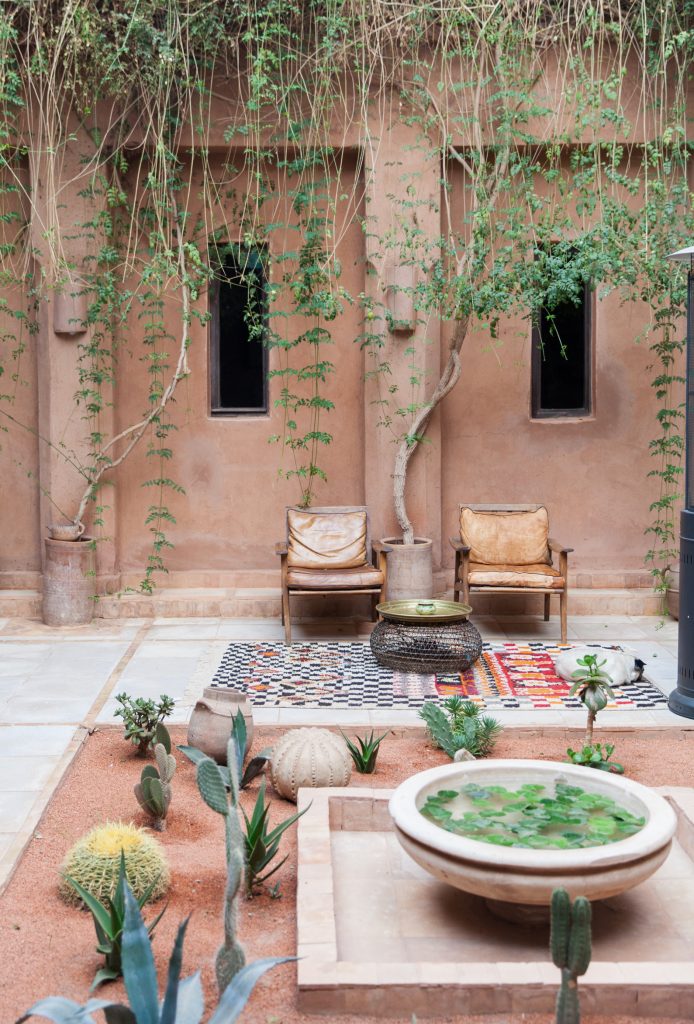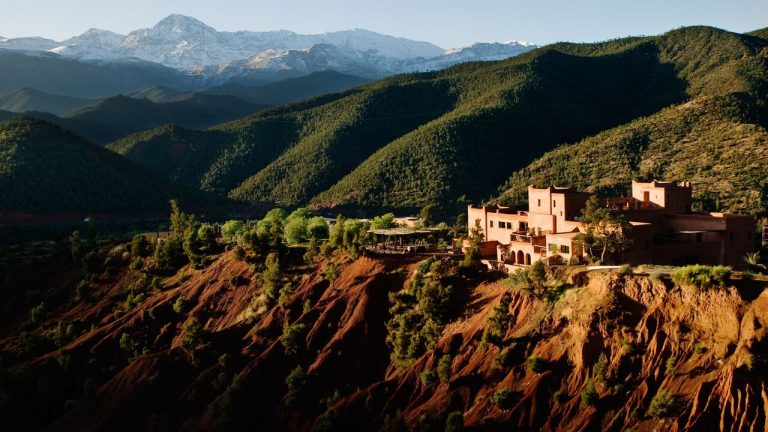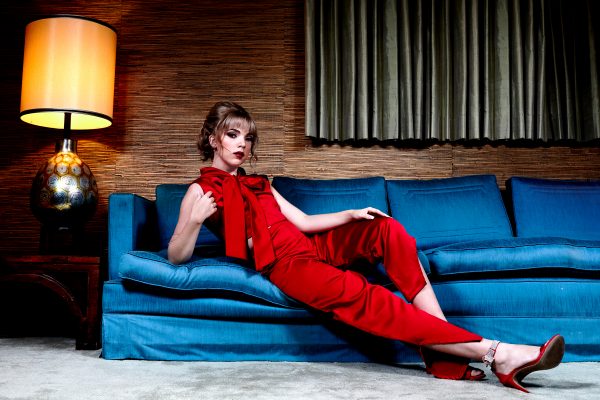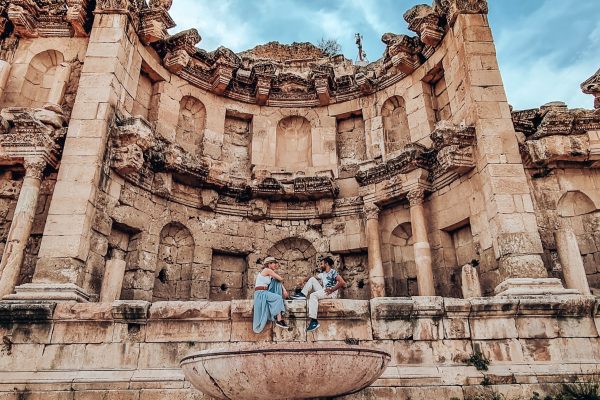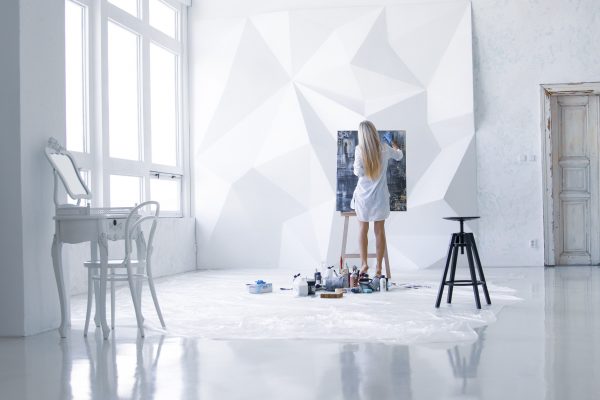As the Berber men hover clay, conical-shaped tagine pots, the fragrant aromas of lamb, garlic and lemons waft through the sun-drenched air. The smoke from the charcoal fire creates a haze, a hint of mystery accentuated by the shadows cast by the looming Atlas Mountains nearby. All seems whimsically exotic under what famed writer Paul Bowles called a “Sheltering Sky.” Hotel guests lazily lounge by infinity pools, shaded by lemon, orange and white bougainvillea trees. Other lodgers book camel excursions, plan shuttle trips to Marrakech, or simply sun bathe on terraces. Savoring their tagines, a specialty throughout Morocco and this sub-Saharan locale, the gardeners smile appreciatively and call out, “Mr. Stephen, Mr. Stephen.” After waving at them, Stephen Skinner, the creator/owner of the 28 room Kasbah Bab Ourika hurriedly strides past a lush organic garden towards the Beldi Spa.
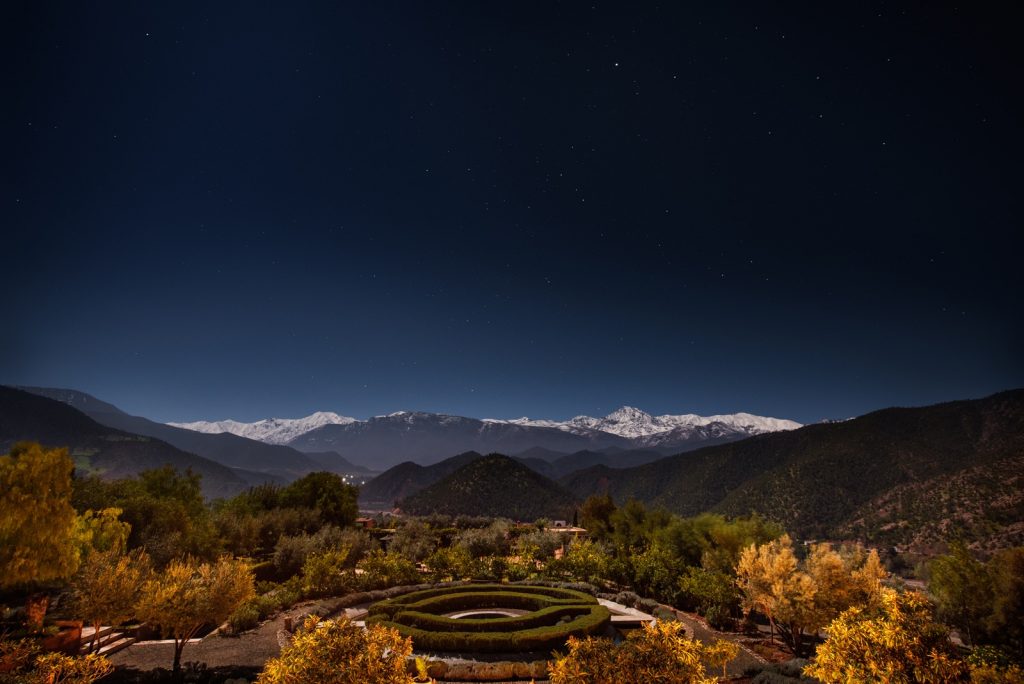
“I won’t be enjoying the hamman, or the aromatherapy, not today,” laughs Skinner, who “serendipitously” discovered this plateaued site, overlooking the Ourika Valley in 2000. He subsequently relied on interior designer Beatriz Maximo to artfully furnish the 13 suites with Berber antiques, and has conscientiously worked on environmental projects to revitalize local villages.“I’m off, going to a few flea markets, hopefully I’ll find some quirky terracotta pots, whatever,” he explains, passing by The Retreat, a newly-added, 11-suite sanctuary. “I try being creative with the pisé de terre buildings, the plantings. That’s easy. The light here is that magical.
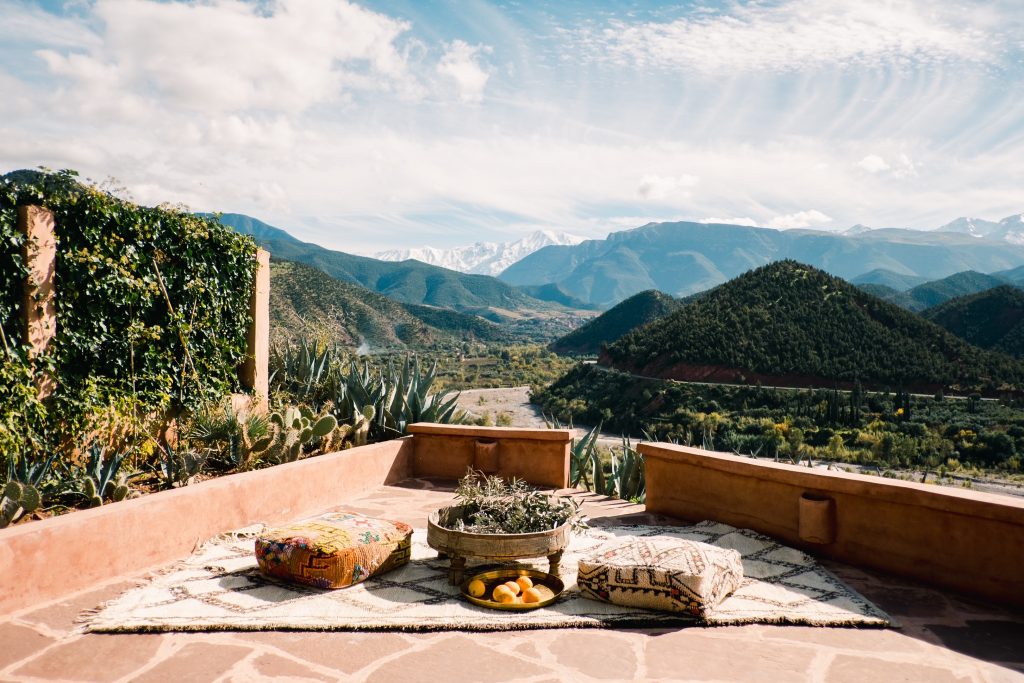
“My other passion is discovering. Finding imposing wooden Berber doors, vintage (hand-made, wool) rugs, stunning Bejmat (glazed) tiles…being the artist in a way. This is all about appreciating experiences and creating new ones. I want the Kasbah to mirror the Berber way of life. ”Relentlessly the sleuth, trying to bridge the divide that inherently separates Berbers from foreign influences, Skinner is the visionary who turned an olive grove-lined hillside into a captivating idyll.
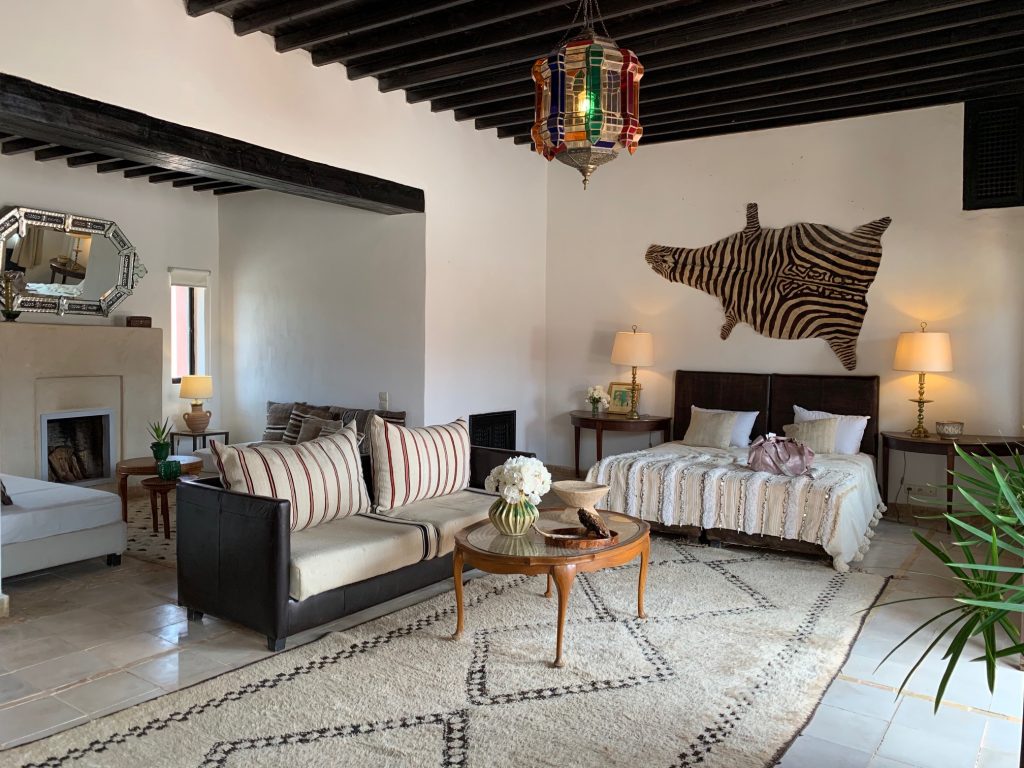
A British transplant, Skinner had successfully operated a small Marrakech riad for 10 years. Once this walled, medieval city with labyrinthine, snaking alleyways, souks, and the fabled Jemaa el-Fnaa square became overwhelmed by tourists, he felt a calmer, but still nearby, locale would be appealing–a luxurious destination affording healthy food and seclusion in a picturesque setting. To realize his ambitious plans–to create more than swimming pools and expansive accommodations–he needed a “story teller.” Someone who could turn a vast, helter skelter array of local objects into a unified design theme, a harmony that evoked the beauty of Berber culture.
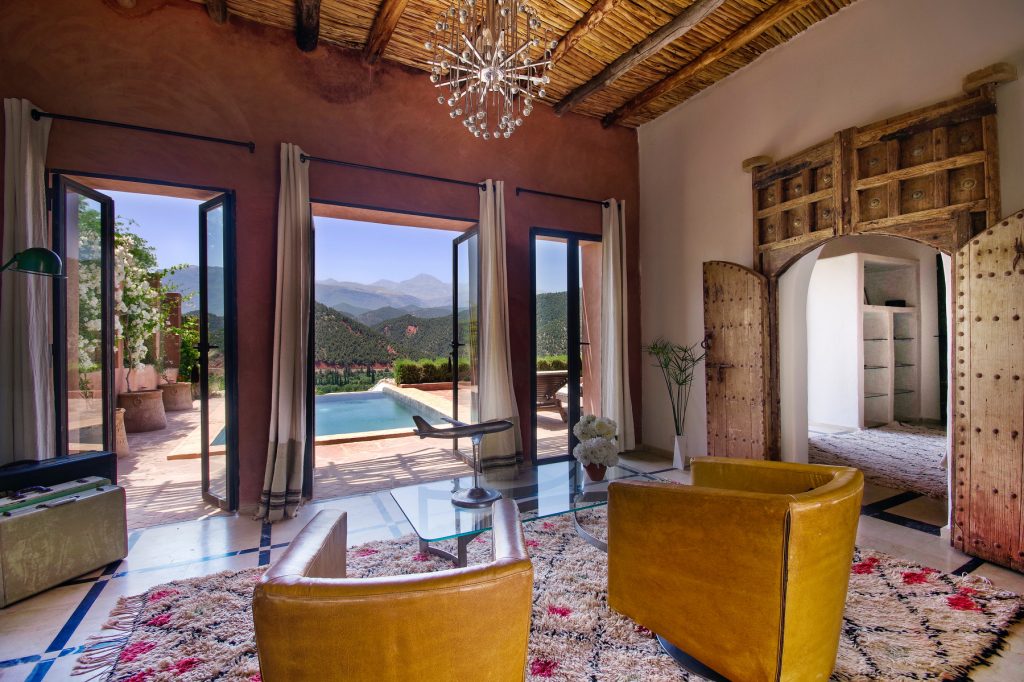
Passionate about locally-crafted rugs (see the accompanying sidebar), and “the soul” expressed in their magentas, oranges and blues, Maximo was the ideal collaborator for him. She, like fashion designer Yves Saint Laurent, who constantly escaped to Marrakech to savor its fragrances, colourful tones and vibrancy, felt a special kinship with local craftspeople. Yet she was still mystified by the puzzle awaiting her at the Kasbah. “All the 100% Beni Ourain rugs, Medina doors, and lamps that had been acquired told many stories, I just didn’t know what to do with them,” concedes Maximo, who has been living in Morocco for 21 years. Admittedly bewitched by the Berbers’ welcoming culture and “the fragile light that gives everything a dreamy quality,” Maximo quickly adds, “I only knew I wanted to create a serene, intimate atmosphere strongly tied to the local people.”
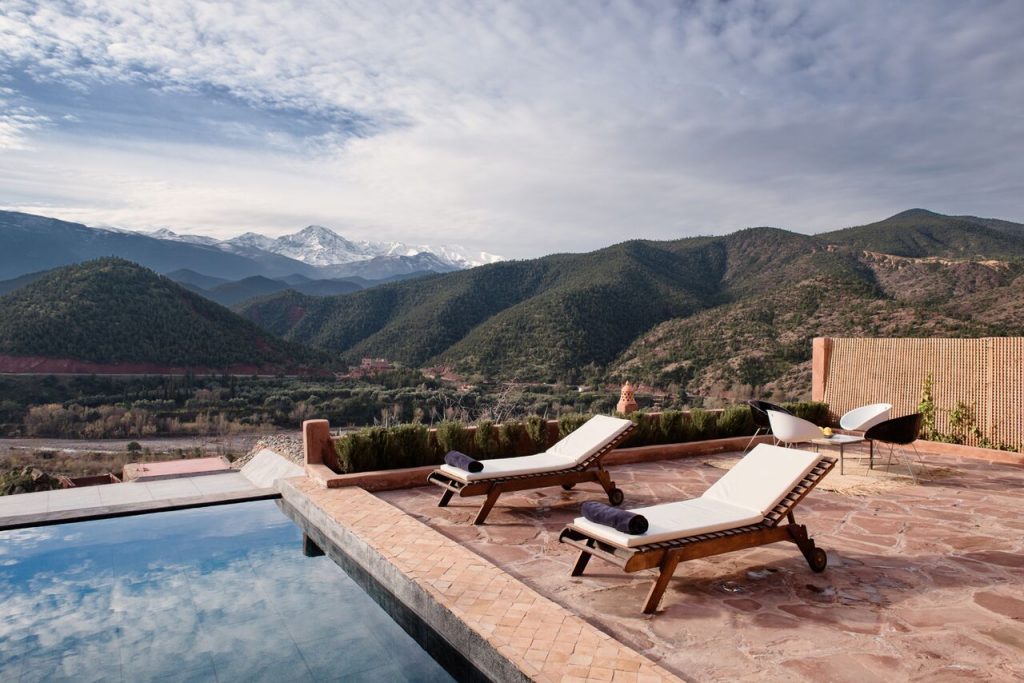
Now offering an array of Azilal, Kilim, and other rugs on her www.minttealovers.com website, Maximo felt an immediate bond with the sparkling Red Canyon hillsides. Skinner’s minimally-invasive buildings also appealed to her sense of place–or her wanting to capture the “emotions and secrets” of the valley. Yet Skinner had greatly complicated her task. He had acquired so many fine objects, the scores of hand-painted doors, chests and lamps presented Maximo with a dilemma. “I had all these treasures, yet the confusion was, where would I put them?” admits Maximo. “Many of them were made by Berbers while sitting on old rugs, so they had emotions, evoked emotions.
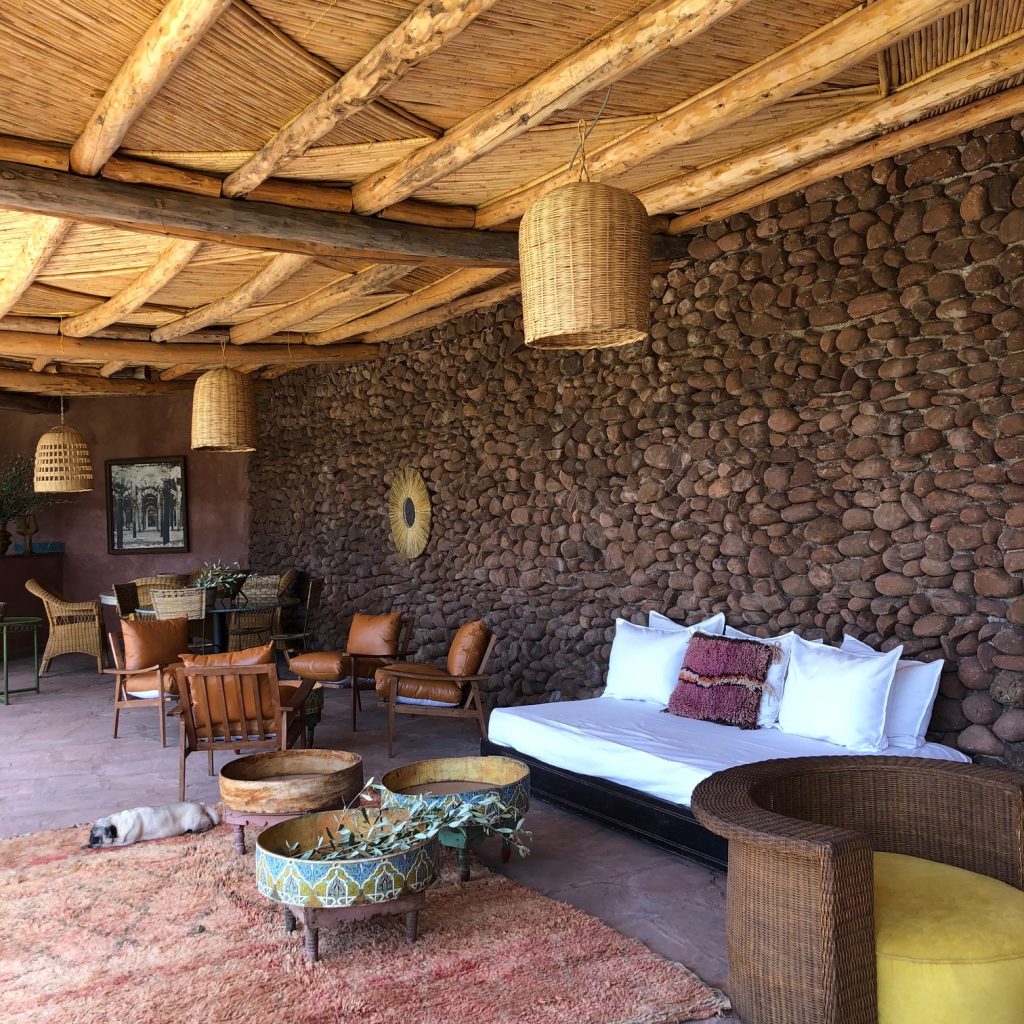
“Slowly, slowly I started putting things in place. I also constantly changed objects, moved them around, experimented. The Kasbah’s design is always evolving.” The most recent evolution is The Retreat, an 11 room, “positive energy” hideaway ideal for yoga enthusiasts, and for those seeking absolute privacy. Offering expansive views of the snow-capped mountains and menus sourced from the bio gardens, this soothing, mood-altering “oasis inside an oasis” is dedicated to one indulgence–revitalization.
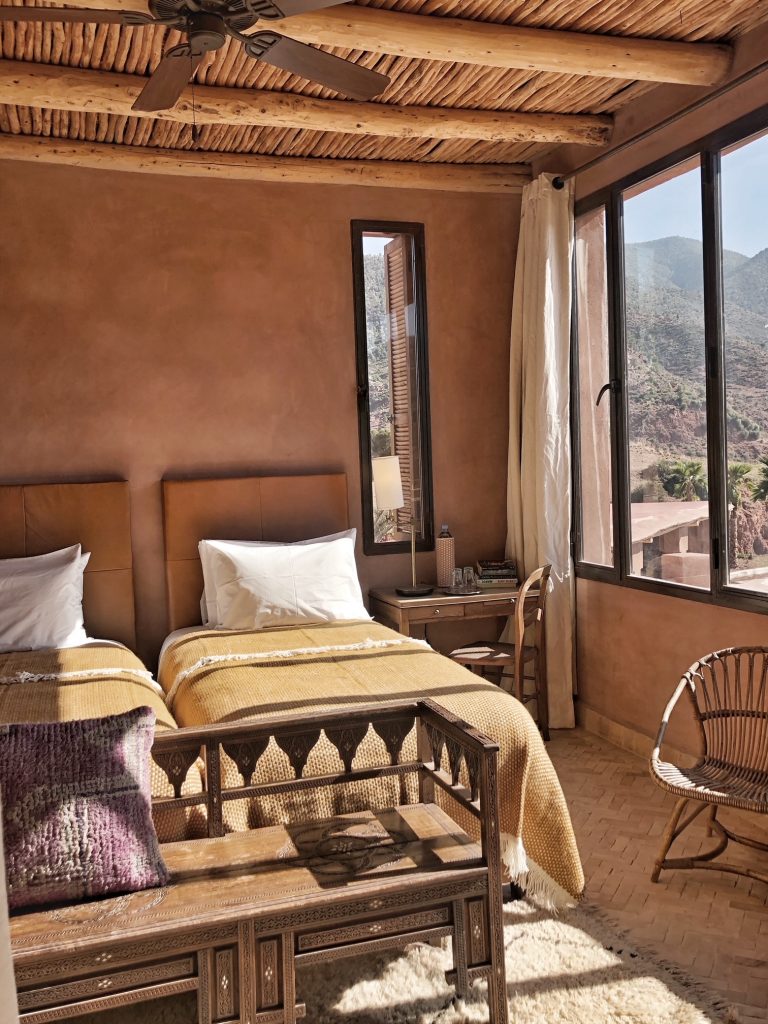
Discovering a new sense of inner peace typically involves massages, aromatherapy, and jumping into one of the 5 Kasbah pools. But the mighty Atlas also plays an inspiring role in self-awakening. It is the sensory experience, a visual feast for hiking red rock ravines, and always the majestic presence during moon-lit dinners at the Retreat’s Colonnade. A columned, shaded portico, seeming modeled after an ancient Roman or Greek bath house, this lounge and dining area is framed by a striking wall of dark stones hand-picked from the nearby Ourika River. It’s meant to dramatically evoke a “river bed,” and in effect, further emphasizes the Kasbah’s palpable link to Berber life.
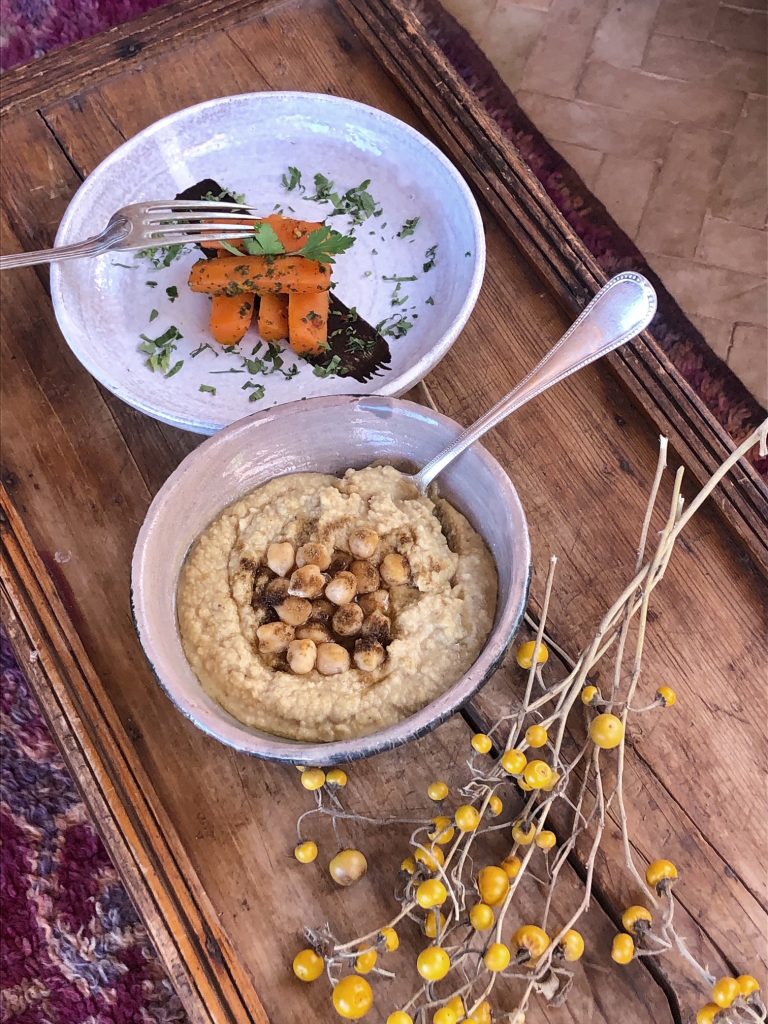
Rampant tourism and unmitigated economic growth now threatens the remaining vestiges of traditional village culture. Despite Morocco’s prosperity, Berbers, or the “free people” known for keen trading skills, are often overlooked by governmental assistance programs–but not by Skinner. Long dedicated to serving the local community, he has diligently educated himself about water and waste management issues to help the Berbers resolve local growth issues. Recently traveling to India to study the impact of methane-producing bacteria in landfills, Skinner says, “the Kasbah is a part of this community. I employ 75 local people, I must be concerned about their welfare.”
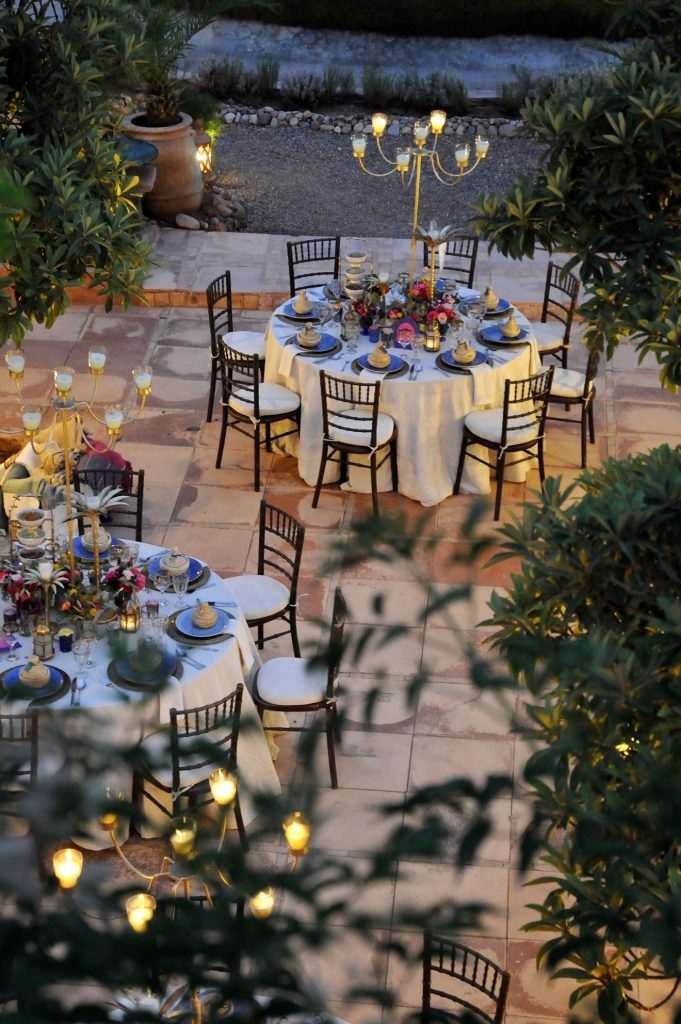
Echoing that feeling, Maximo is equally committed to preserving centuries-old traditions of small, remote villages. From a mountainous town in Portugal (Unhais da Serra), she understands the challenges faced by female weavers, and she purposely works with NGOs or cooperatives to support the women’s struggle for social and financial independence. “Along with revealing secrets, memories, telling deep emotional stories, rugs help these weavers maintain their existence,” insists Maximo, who managed a Marrakech riad for 10 years. “I love the illumination, the nature so much in Morocco, I work to preserve it. There’s a glow here, a poetry in the Atlas you can really feel at the Kasbah.”

The infinity pools, the verdant vegetable gardens, the sun-swept terraces, they do convey a hushed stillness, a lulling beauty novelist Edith Wharton compared to “some illuminated Persian manuscript all embroidered with bright shapes and subtle lines. ”So how does one prepare to visit such an abundance of riches–to feel its most intoxicating rhythms? Luxuriate!
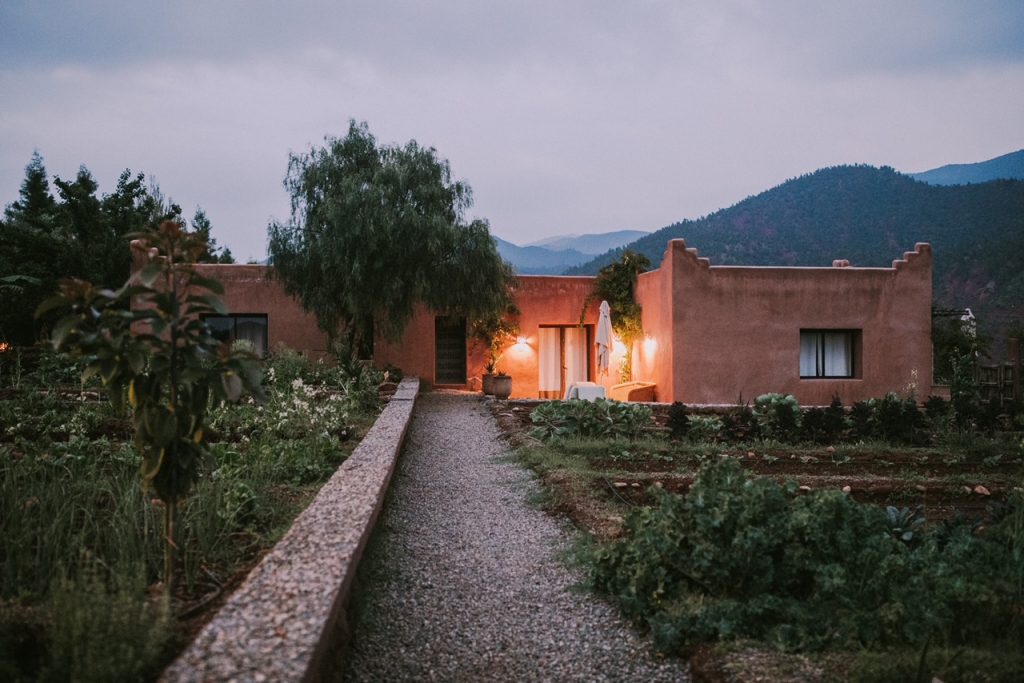
Opt to be pampered by booking the ne plus ultra Pool Suite with sweeping, panoramic views. Along with its WOW factor, the thrill of virtually sitting atop snow-glazed peaks, this spacious Pool Suite is a medley of wooden-beamed ceilings, prized rugs and chests, is all about comfort, indulging, and a delicious degree of extravagance. “I was very lucky to find so many of the wonderful objects in this suite,” says Skinner, standing under a cut-glass French chandelier. Pointing at massive wooden doors, he continues, “You just don’t discover Berber doors like these anymore. They are history.”
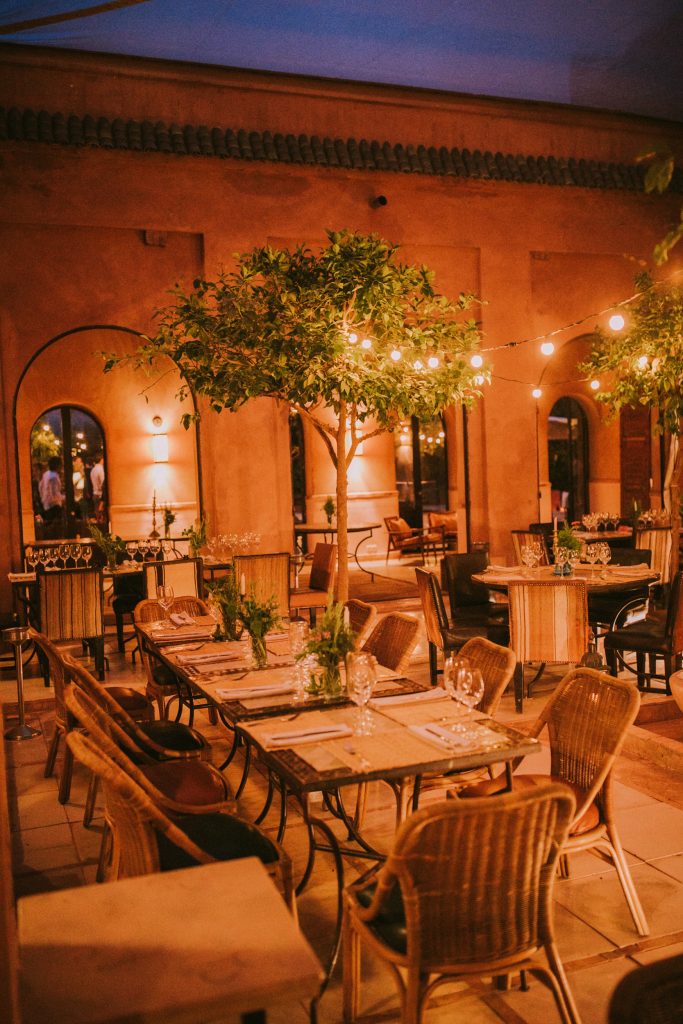
So is the Kasbah.
A seductive time capsule, reinvigorated and reimagined.
http://www.kasbahbabourika.com/
